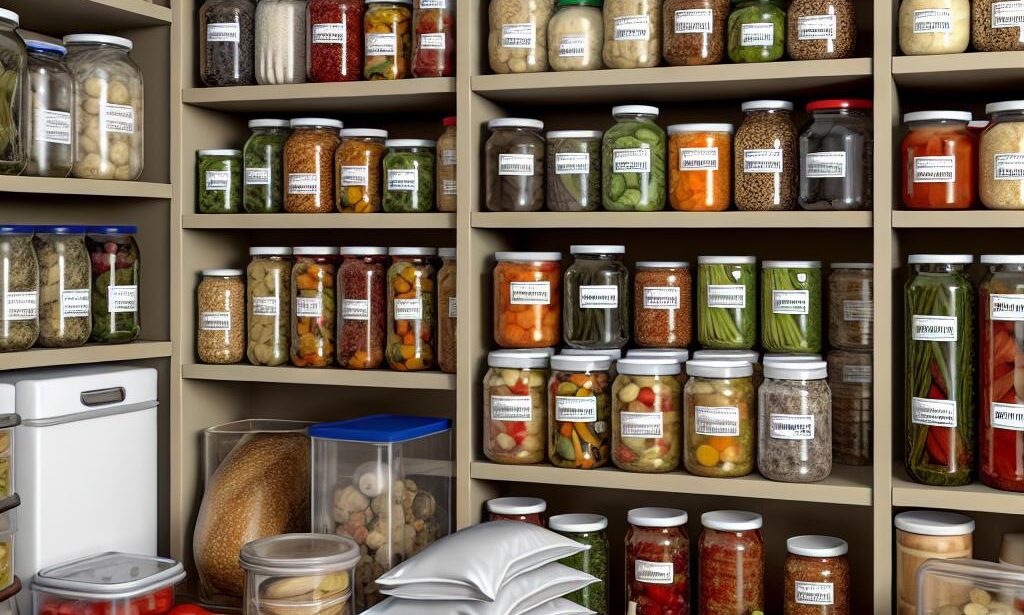Food waste is a significant issue that affects both the environment and the economy. In an effort to combat this problem, effective <a href="https://foodprepstorage.com/preserving-your-harvest-canning-your-own-produce-guide/” title=”Preserving Your Harvest: Canning Your Own Produce Guide”>food preservation techniques have become increasingly important. By cutting food waste through proper preservation, we can not only reduce our environmental impact, but also save money and resources. In this article, we will explore the various methods and technologies available for preserving food and discuss their potential impact on reducing food waste.
Table of Contents
- Reducing Food Waste: The Importance of Effective Preservation
- Understanding the Impact of Food Waste on the Environment and Economy
- Key Strategies for Preserving Food and Extending Shelf Life
- Innovative Technologies and Methods for Food Preservation
- Practical Tips for Minimizing Food Waste through Preservation Techniques
- Q&A
- Insights and Conclusions

Reducing Food Waste: The Importance of Effective Preservation
Effective preservation of food is crucial in reducing food waste and ensuring that we make the most of the resources available to us. By preserving food effectively, we can extend its shelf life and minimize the amount of food that goes to waste. This not only helps to save money, but also reduces the environmental impact of food waste.
There are various methods of food preservation that can be employed to cut down on waste. These include:
- Canning: This method involves sealing food in airtight containers and heating them to destroy any microorganisms that could cause spoilage.
- Freezing: Freezing food can help to preserve it for extended periods, maintaining its quality and nutritional value.
- Drying: Dehydrating food removes moisture, preventing the growth of bacteria and mold.
By utilizing these preservation methods, we can significantly reduce the amount of food that goes to waste, ultimately benefiting both our wallets and the environment.

Understanding the Impact of Food Waste on the Environment and Economy
Food waste is a significant issue that has far-reaching impacts on both the environment and the economy. When food is wasted, it not only contributes to greenhouse gas emissions as it decomposes in landfills, but it also represents a loss of resources and money. In fact, the economic cost of food waste is estimated to be in the billions of dollars each year.
One effective way to combat food waste is through the use of proper preservation techniques. By preserving food, we can extend its shelf life and reduce the likelihood of it ending up in the trash. This not only helps to minimize the environmental impact of food waste but also saves money for both consumers and businesses. Effective preservation methods can include canning, freezing, pickling, and drying, among others. By utilizing these techniques, we can make a significant dent in the amount of food that is wasted each year.

Key Strategies for Preserving Food and Extending Shelf Life
Preserving food and extending shelf life is essential for cutting down on food waste and saving money. There are several key strategies that can help you effectively preserve your food and make it last longer. By implementing these strategies, you can reduce the amount of food that goes to waste and ensure that you always have fresh, tasty ingredients on hand.
One key strategy for preserving food is canning. Canning involves sealing food in airtight containers and heating them to destroy any microorganisms that could cause spoilage. This method is particularly effective for preserving fruits, vegetables, and meats. Another effective strategy is freezing. Freezing food can significantly extend its shelf life, and it’s a great way to preserve items like bread, meat, and leftovers. Additionally, pickling is a popular preservation method that involves immersing food in a solution of vinegar, salt, and spices. This method is ideal for preserving vegetables like cucumbers, carrots, and onions.

Innovative Technologies and Methods for Food Preservation
When it comes to reducing food waste, effective preservation methods and innovative technologies play a crucial role. By implementing these advancements, we can significantly cut down on the amount of food that goes to waste, ultimately benefiting both the environment and our wallets.
One innovative method for food preservation is high-pressure processing (HPP), which involves subjecting packaged food to extremely high pressure to eliminate harmful bacteria and extend shelf life. This non-thermal technology helps maintain the nutritional value and flavor of the food, making it an attractive option for preserving a wide range of products, including juices, meats, and seafood. Additionally, vacuum packaging and modified atmosphere packaging (MAP) are effective techniques for extending the shelf life of perishable foods by removing air and controlling the atmosphere around the product, thereby slowing down the growth of spoilage microorganisms.
Furthermore, the use of natural preservatives such as plant extracts, essential oils, and organic acids is gaining traction as a sustainable alternative to synthetic additives. These natural compounds not only inhibit the growth of bacteria and fungi but also offer potential health benefits. By embracing these , we can make significant strides in reducing food waste and promoting a more sustainable food system.

Practical Tips for Minimizing Food Waste through Preservation Techniques
When it comes to minimizing food waste, preservation techniques can be incredibly effective. By utilizing various methods of preserving food, you can extend the shelf life of your produce and reduce the amount of food that ends up in the trash. Here are some practical tips for cutting food waste through preservation:
- Canning: Canning is a great way to preserve fruits, vegetables, and even meats. By using a pressure canner or water bath canner, you can safely store your food for long periods of time.
- Freezing: Freezing is one of the easiest and most convenient ways to preserve food. Whether you’re freezing fresh produce, cooked meals, or leftovers, this method can help prevent food from spoiling.
- Drying: Drying food, whether through sun-drying, dehydrating, or oven-drying, can significantly extend the shelf life of fruits, vegetables, herbs, and even meats.
By incorporating these preservation techniques into your routine, you can reduce food waste and save money in the long run. Not only will you be able to enjoy your favorite foods for longer, but you’ll also be doing your part to minimize food waste and its impact on the environment.
Q&A
Q: What are some effective methods for preserving food and reducing waste?
A: There are several methods for preserving food, including canning, freezing, drying, pickling, and fermenting. These methods can help extend the shelf life of food and reduce the amount of waste produced.
Q: How does canning help reduce food waste?
A: Canning involves sealing food in airtight containers and heating them to destroy microorganisms that cause spoilage. This process helps preserve food for long periods of time, reducing the likelihood of it going to waste.
Q: What are the benefits of freezing food for preservation?
A: Freezing food can help extend its shelf life and prevent spoilage. It also allows for bulk buying and storing of seasonal produce, reducing the amount of food that goes to waste.
Q: How does pickling and fermenting help in reducing food waste?
A: Pickling and fermenting are traditional methods of preserving food that can help extend its shelf life. These methods also enhance the flavor of food and can be a great way to use up excess produce.
Q: What are some tips for effectively preserving food at home?
A: Some tips for effectively preserving food at home include using proper storage containers, following safe canning practices, labeling and dating preserved foods, and keeping track of what you have on hand to avoid overbuying.
Q: How can effective preservation methods contribute to reducing food waste on a larger scale?
A: By preserving food, we can reduce the amount of food that goes to waste at both the consumer and producer levels. This can help alleviate food insecurity and reduce the environmental impact of food waste.
Insights and Conclusions
In conclusion, effective food preservation methods can significantly reduce food waste and contribute to a more sustainable food system. By utilizing techniques such as canning, freezing, and drying, individuals and businesses can extend the shelf life of perishable items and minimize the amount of food that ends up in landfills. Additionally, investing in proper storage containers and equipment can further enhance the preservation process. By making a conscious effort to reduce food waste through preservation, we can all play a part in creating a more environmentally friendly and efficient food supply chain.

